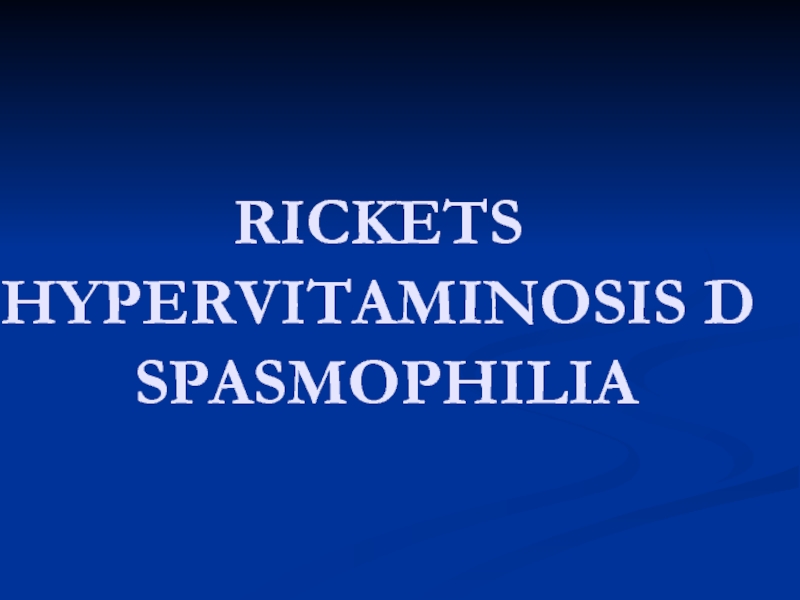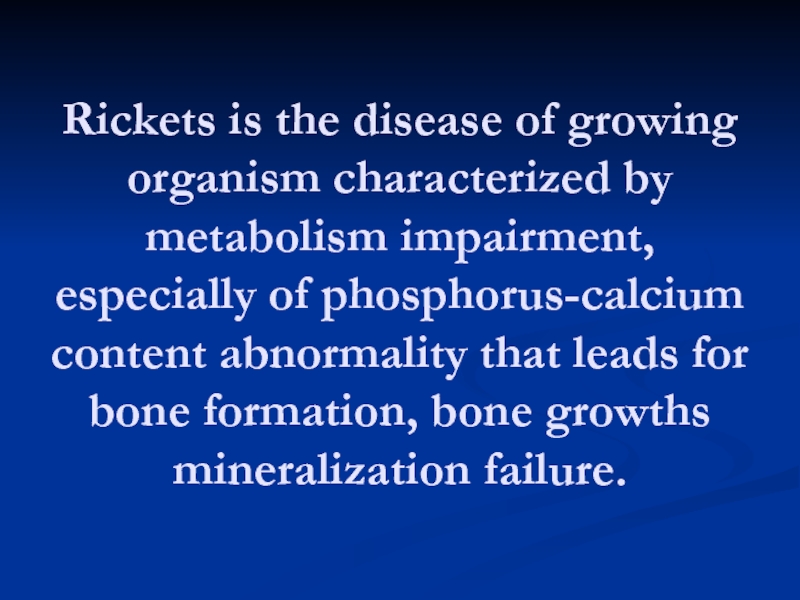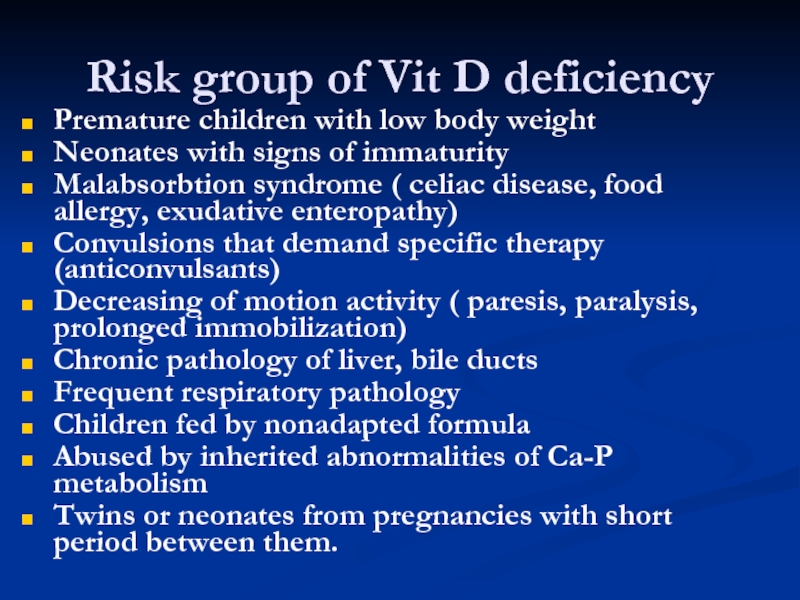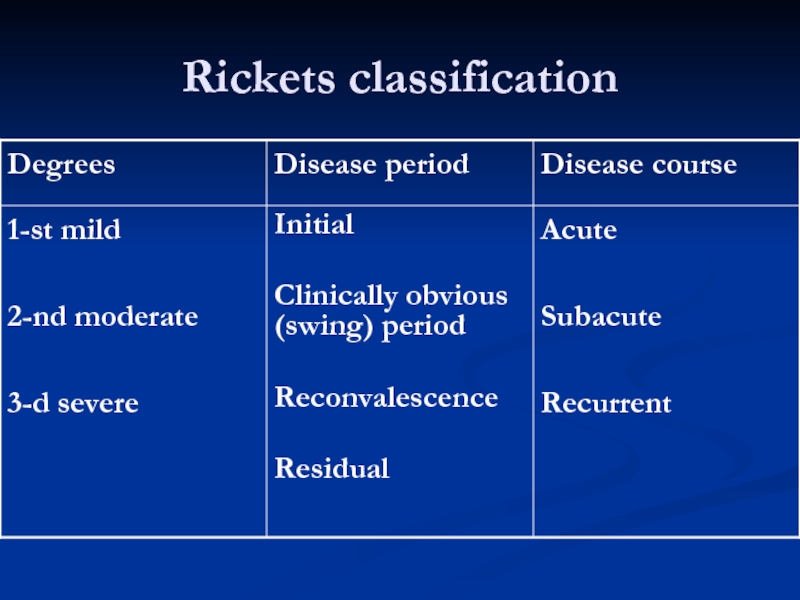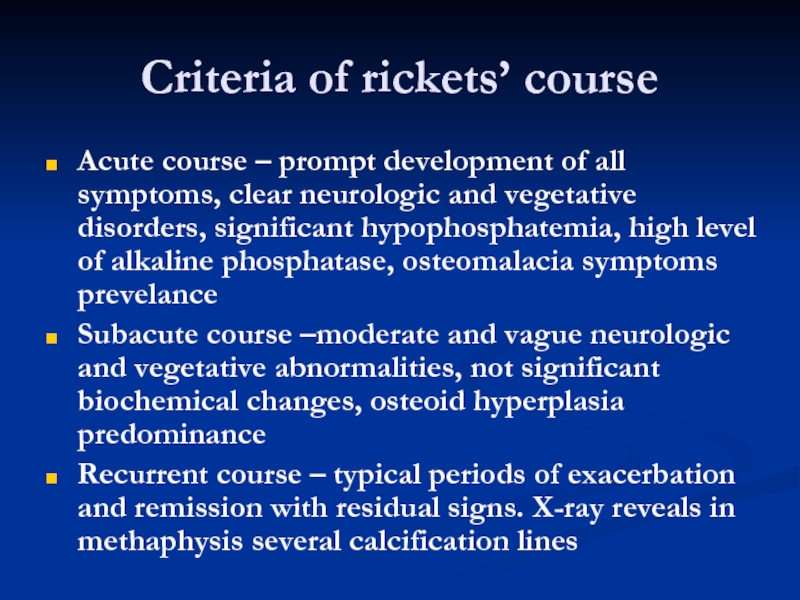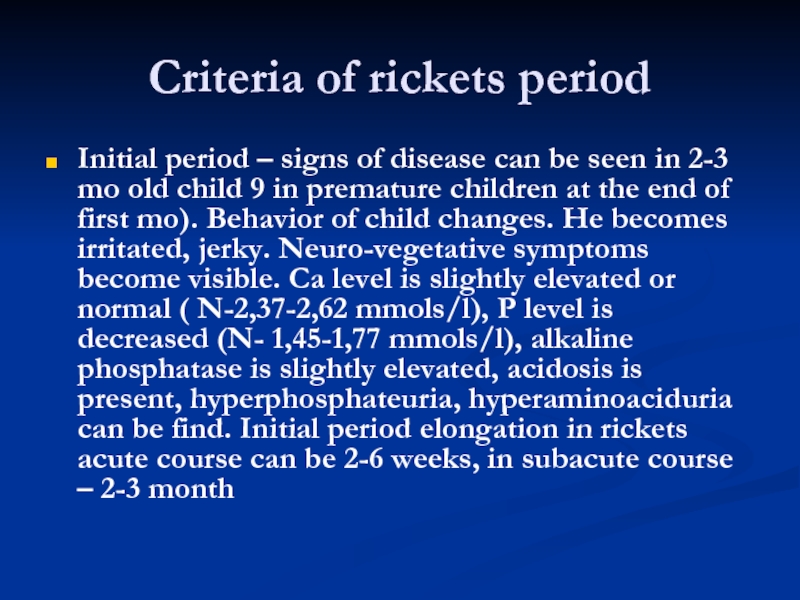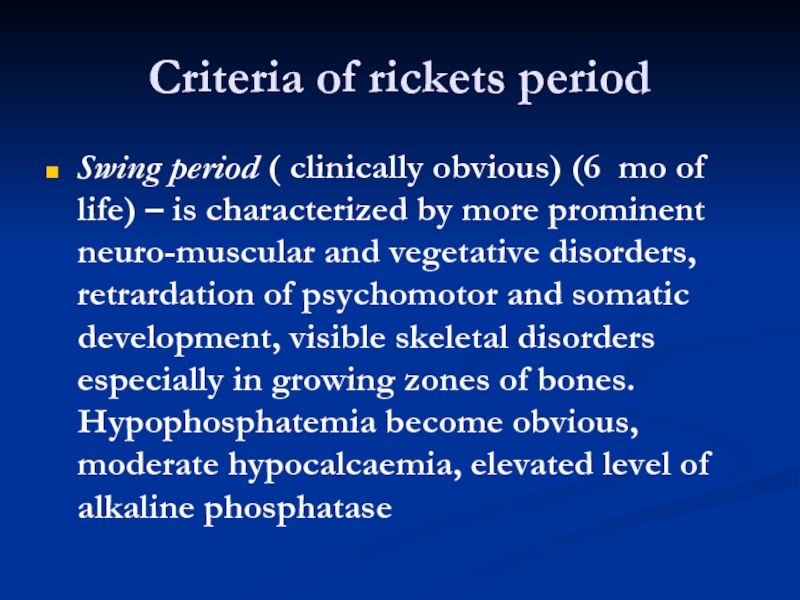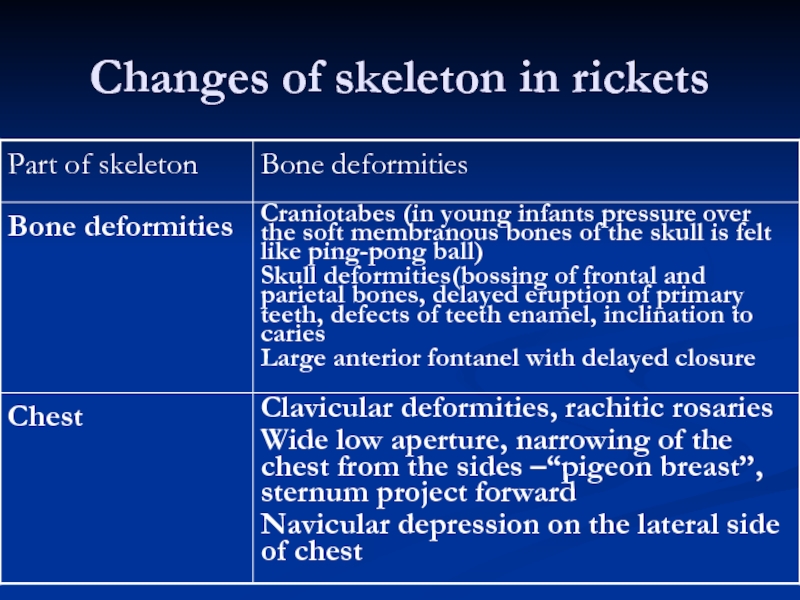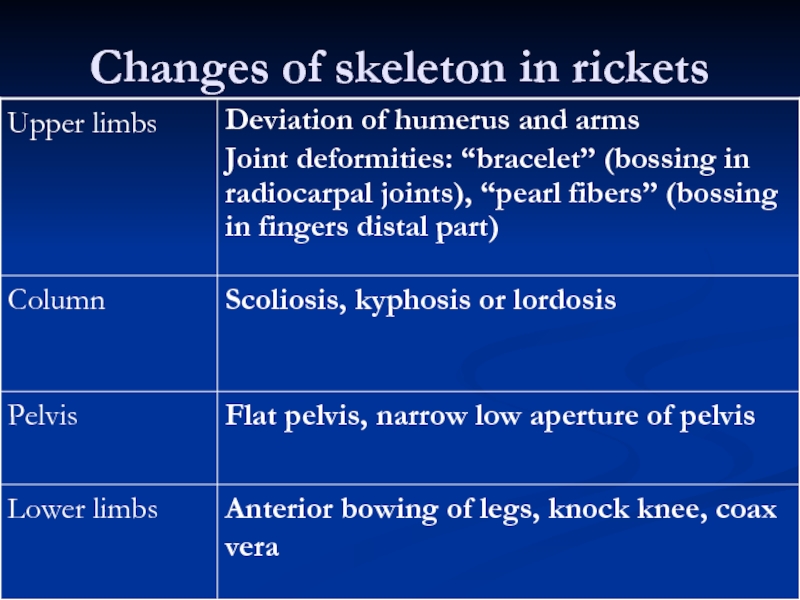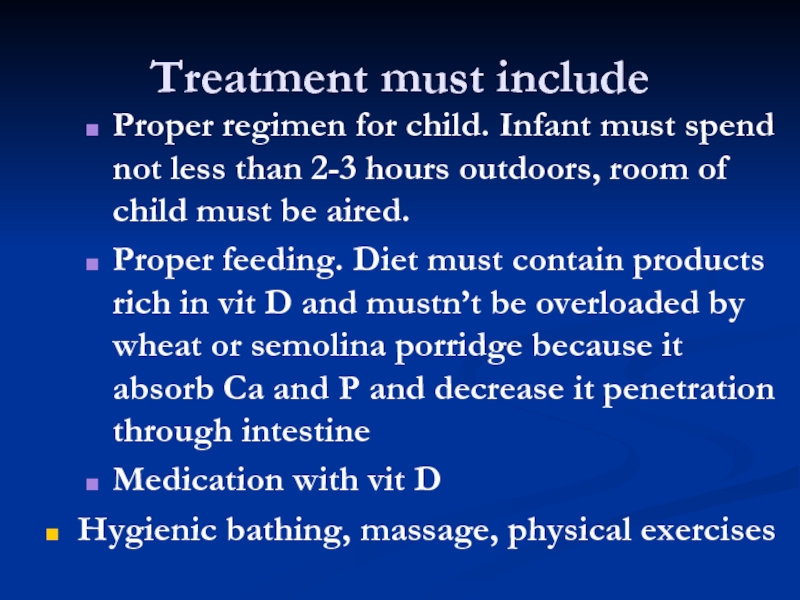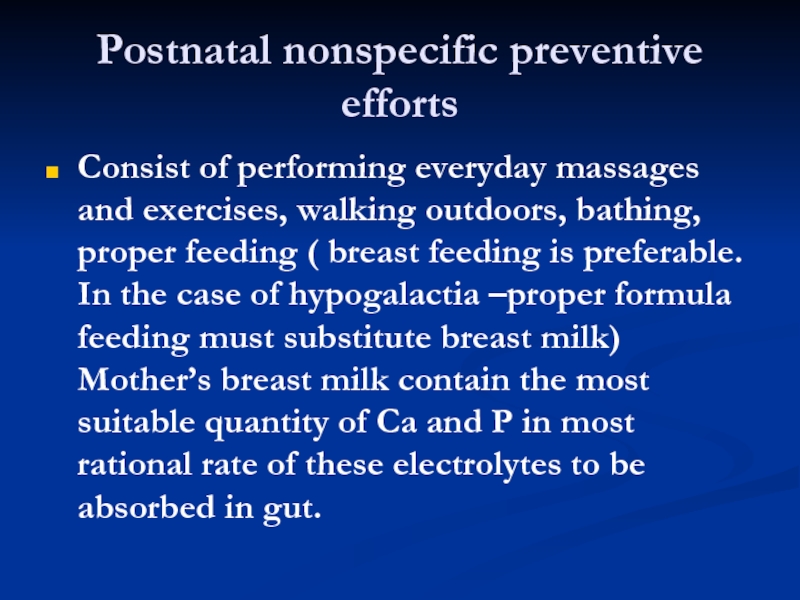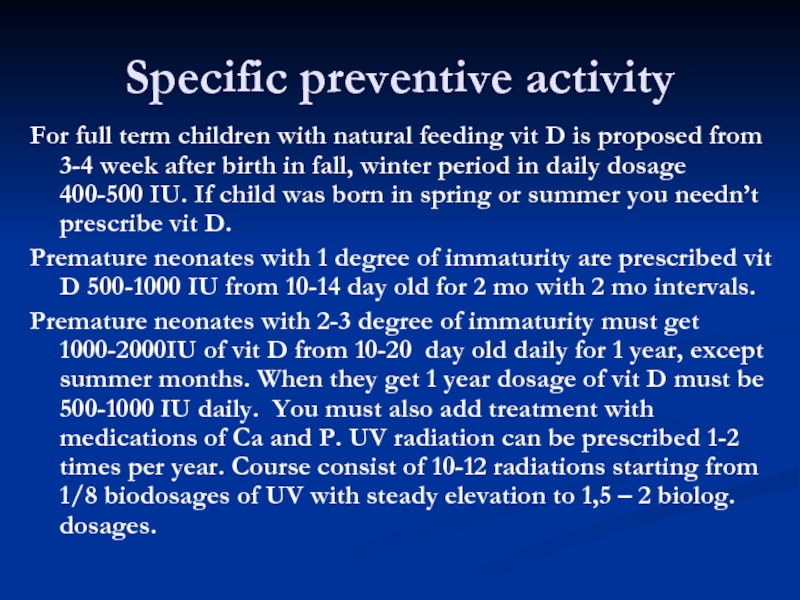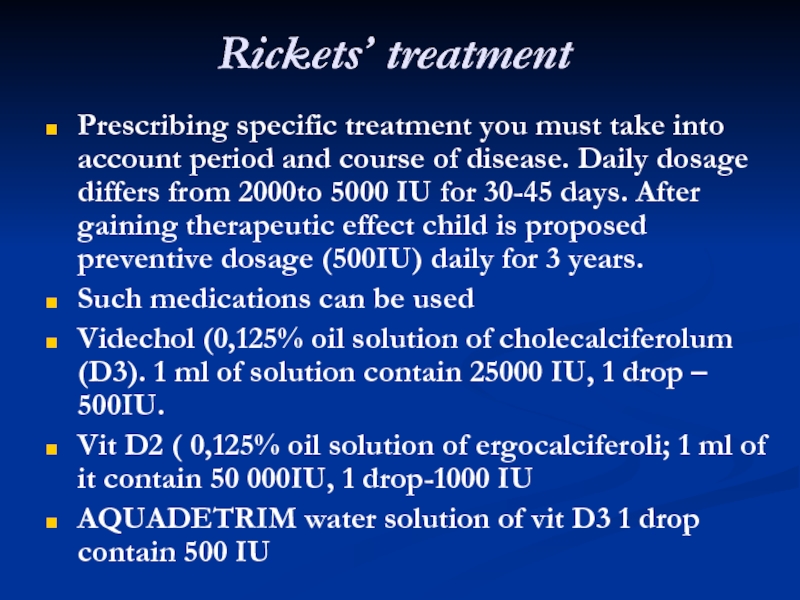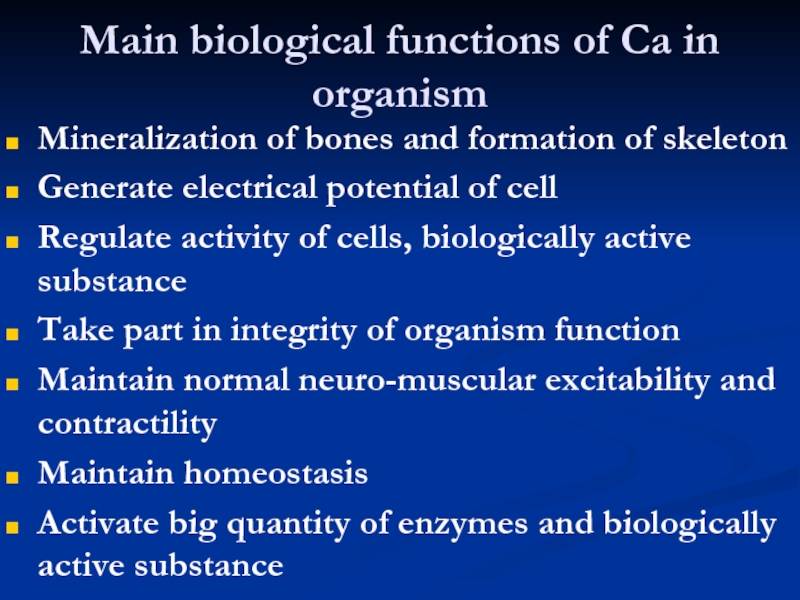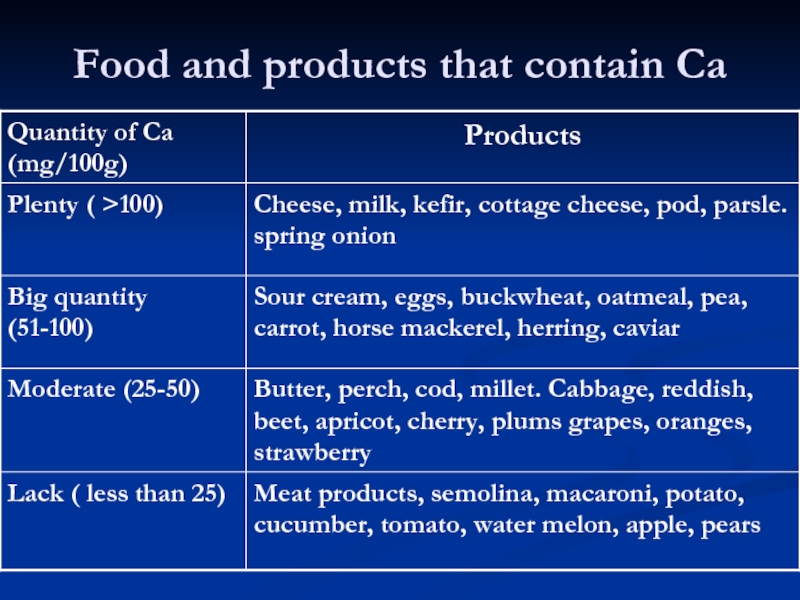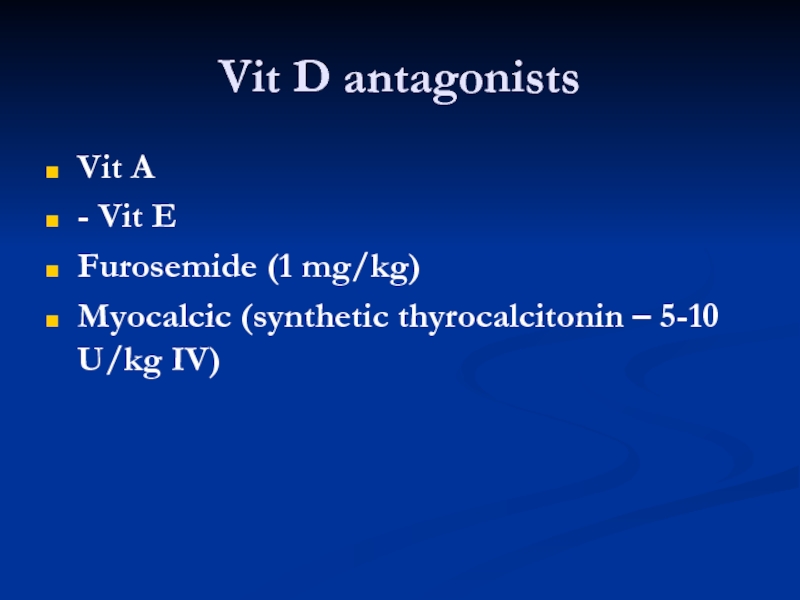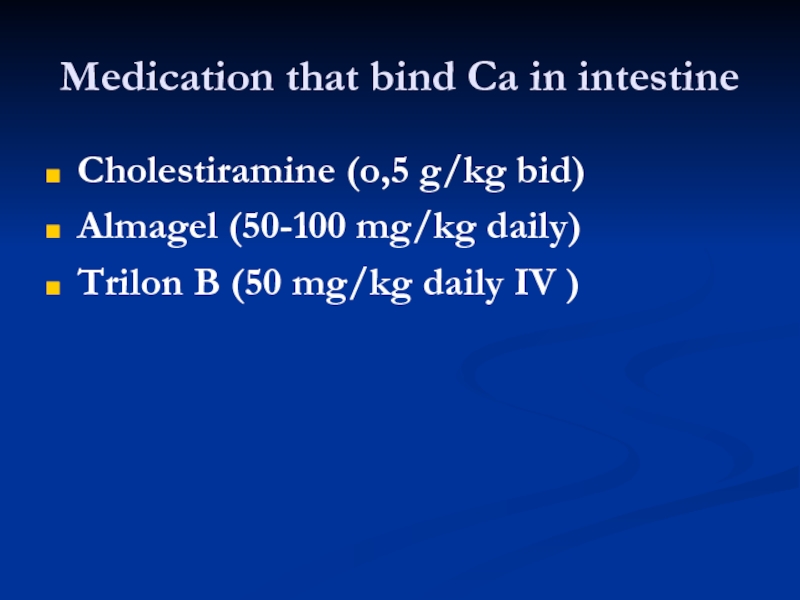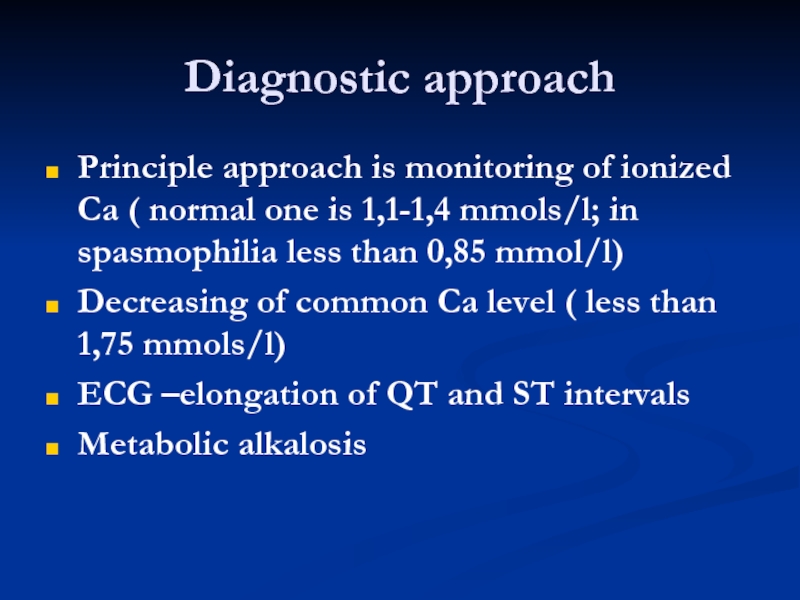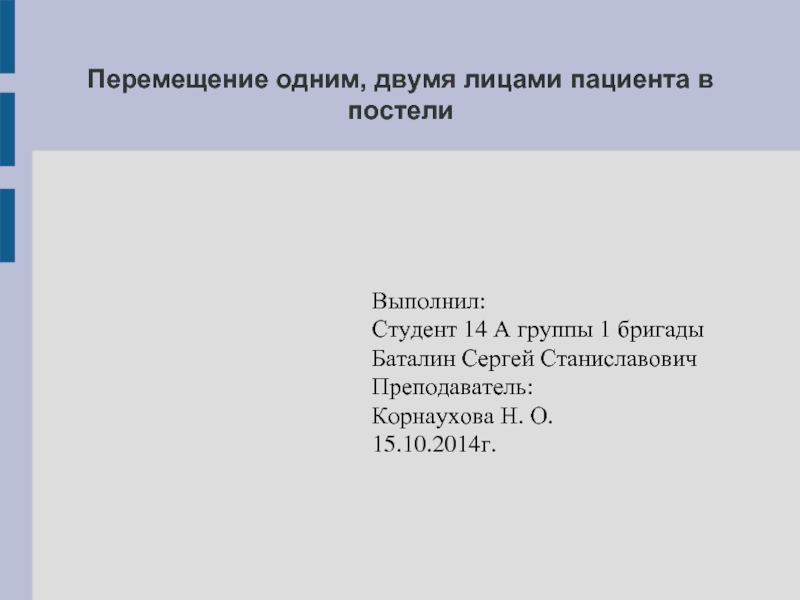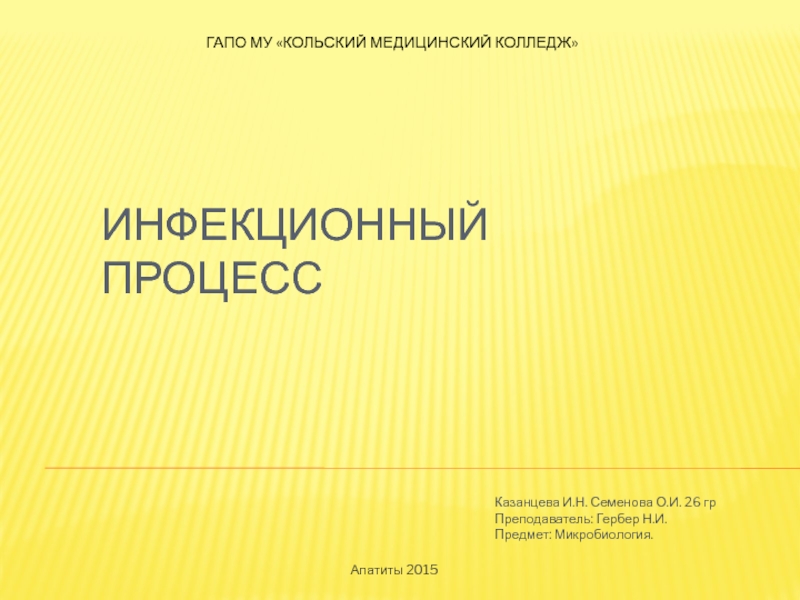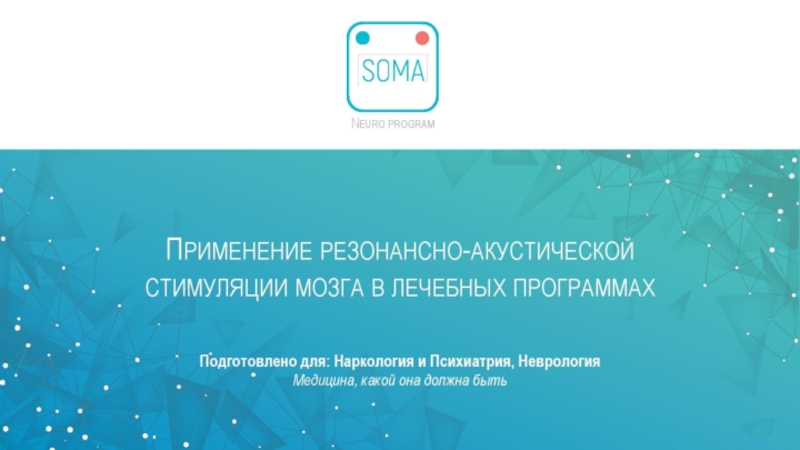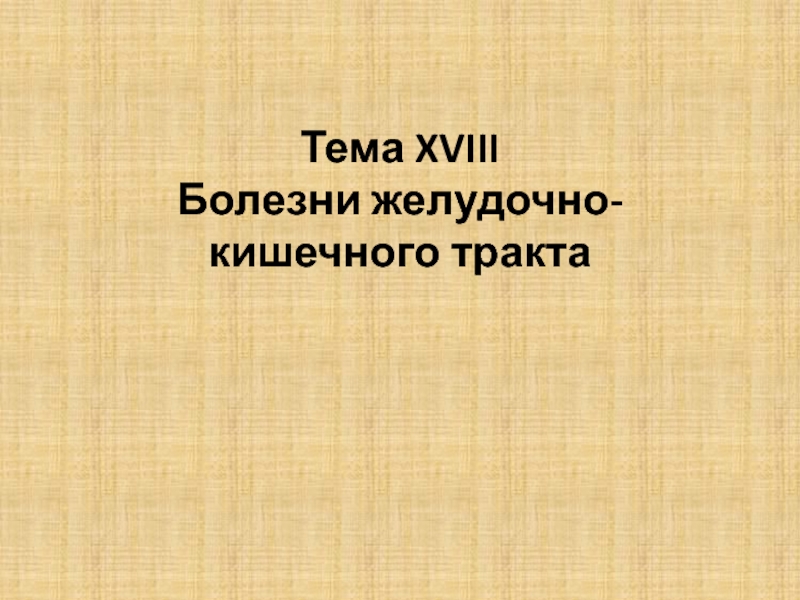- Главная
- Разное
- Дизайн
- Бизнес и предпринимательство
- Аналитика
- Образование
- Развлечения
- Красота и здоровье
- Финансы
- Государство
- Путешествия
- Спорт
- Недвижимость
- Армия
- Графика
- Культурология
- Еда и кулинария
- Лингвистика
- Английский язык
- Астрономия
- Алгебра
- Биология
- География
- Детские презентации
- Информатика
- История
- Литература
- Маркетинг
- Математика
- Медицина
- Менеджмент
- Музыка
- МХК
- Немецкий язык
- ОБЖ
- Обществознание
- Окружающий мир
- Педагогика
- Русский язык
- Технология
- Физика
- Философия
- Химия
- Шаблоны, картинки для презентаций
- Экология
- Экономика
- Юриспруденция
Rickets hypervitaminosis d spasmophilia презентация
Содержание
- 1. Rickets hypervitaminosis d spasmophilia
- 2. Plan of the lecture 1. Definition
- 3. Rickets is the disease of growing organism
- 4. Necessity of Vit D Vit D activity
- 5. Biological activity of VitD metabolites Enhancing
- 6. Vit D deficiency consequences
- 7. Rickets predisposing factors
- 8. Exogene reasons of Vit D deficiencies
- 9. Endogene reasons of Vit D deficiency Malabsorption
- 10. Risk group of Vit D deficiency Premature
- 11. Rickets classification
- 12. Criteria of rickets’ severity !-st degree rickets
- 13. Criteria of rickets’ course Acute course –
- 14. Criteria of rickets period Initial period –
- 15. Criteria of rickets period Swing period
- 16. Criteria of rickets period Reconvalescence period
- 17. Changes of skeleton in rickets
- 18. Changes of skeleton in rickets
- 19. Main treatment goal Restoration of Ca-P metabolism
- 20. Treatment must include Proper regimen for child.
- 21. Antinatal nonspecific prevention of rickets Pregnant
- 22. Postnatal nonspecific preventive efforts Consist of performing
- 23. Specific preventive activity For full term
- 24. Rickets’ treatment Prescribing specific treatment you
- 25. Main biological functions of Ca in organism
- 26. Food and products that contain Ca
- 27. Contraindications for Vit D treatment Intrapartum intracranium
- 28. Hyper-VitD treatment Stop intake of Vit D
- 29. Vit D antagonists Vit A - Vit
- 30. Medication that bind Ca in intestine Cholestiramine
- 31. Diagnostic approach Principle approach is monitoring of
- 32. Spasmophilia treatment Latent form Regimen normalization Diet
- 33. To restore Ca level can be used
- 34. Control questions Function of vitamin D
Слайд 2Plan of the lecture
1. Definition of Rickets
2. Biological activity of
VitD metabolites
3. Exogene and endogene reasons of Vit D deficiencies
4. Rickets classification
5. Changes of skeleton in rickets
6. Treatment fnd prevention of rickets
7. Hypervitaminosis D
8. Spasmophilia
3. Exogene and endogene reasons of Vit D deficiencies
4. Rickets classification
5. Changes of skeleton in rickets
6. Treatment fnd prevention of rickets
7. Hypervitaminosis D
8. Spasmophilia
Слайд 3Rickets is the disease of growing organism characterized by metabolism impairment,
especially of phosphorus-calcium content abnormality that leads for bone formation, bone growths mineralization failure.
Слайд 4Necessity of Vit D
Vit D activity is measured in IU. One
IU contains 0,025 mcg of Vit D. 400 IU contain 10 mcg of Vit D
Слайд 5Biological activity of VitD metabolites
Enhancing of intestine Ca absorbtion
Active Ca
and P reabsorbtion in kidney
Mineralization of cartilages and bone formation
Bone collagen and bone proteins synthesis activation ( osteocalcin, osteopontine)
Bone resorbtion stimulation
Immune response modulation, phagocytosis activation
Mineralization of cartilages and bone formation
Bone collagen and bone proteins synthesis activation ( osteocalcin, osteopontine)
Bone resorbtion stimulation
Immune response modulation, phagocytosis activation
Слайд 8Exogene reasons of Vit D deficiencies
Lack of Vit D consumption
with food. Poor containing of products in diet that are rich in VitD ( yolk, fish, oil, milk, butter, liver)
Deficiency of insolation and rare outdoors walks that leads to poor production of Vit D in skin under influence of sun beams (UV spectrum 280-310 nm)
Inproper intake of phosphates and Ca with food
Deficiency of insolation and rare outdoors walks that leads to poor production of Vit D in skin under influence of sun beams (UV spectrum 280-310 nm)
Inproper intake of phosphates and Ca with food
Слайд 9Endogene reasons of Vit D deficiency
Malabsorption of Vit D in intestine
Hydroxylation
of Vit D precursors impairment into active metabolites in liver, kidneys due to chronic diseases of theses organs
Genetic or inherited abnormalities of Vit D synthesizing process
Outstanding loosing of Ca and P by kidneys into urine or impairment of bone absorption of Ca and P.
Absence or degradation of Vit D receptors functional activity.
Genetic or inherited abnormalities of Vit D synthesizing process
Outstanding loosing of Ca and P by kidneys into urine or impairment of bone absorption of Ca and P.
Absence or degradation of Vit D receptors functional activity.
Слайд 10Risk group of Vit D deficiency
Premature children with low body weight
Neonates
with signs of immaturity
Malabsorbtion syndrome ( celiac disease, food allergy, exudative enteropathy)
Convulsions that demand specific therapy (anticonvulsants)
Decreasing of motion activity ( paresis, paralysis, prolonged immobilization)
Chronic pathology of liver, bile ducts
Frequent respiratory pathology
Children fed by nonadapted formula
Abused by inherited abnormalities of Ca-P metabolism
Twins or neonates from pregnancies with short period between them.
Malabsorbtion syndrome ( celiac disease, food allergy, exudative enteropathy)
Convulsions that demand specific therapy (anticonvulsants)
Decreasing of motion activity ( paresis, paralysis, prolonged immobilization)
Chronic pathology of liver, bile ducts
Frequent respiratory pathology
Children fed by nonadapted formula
Abused by inherited abnormalities of Ca-P metabolism
Twins or neonates from pregnancies with short period between them.
Слайд 12Criteria of rickets’ severity
!-st degree rickets is characterized predominantly by neuro-muscular
abnormalities and minimal disturbances of bone formation (craniotabes, occiput flattening, minimal tissue signs in growing zones of metaphysic
2-nd degree rickets ( moderate) – beside neuro-muscular dystonia bone deformities of sculp, chest and limbs are present, moderate functional changes of inner organs
3-d degree rickets (severe) – prominent bone and muscular abnormalities, articular hypermobility, static and locomotor function retardation, impairment of inner organs function due to acidosis and concomitant microvasculature changes
2-nd degree rickets ( moderate) – beside neuro-muscular dystonia bone deformities of sculp, chest and limbs are present, moderate functional changes of inner organs
3-d degree rickets (severe) – prominent bone and muscular abnormalities, articular hypermobility, static and locomotor function retardation, impairment of inner organs function due to acidosis and concomitant microvasculature changes
Слайд 13Criteria of rickets’ course
Acute course – prompt development of all symptoms,
clear neurologic and vegetative disorders, significant hypophosphatemia, high level of alkaline phosphatase, osteomalacia symptoms prevelance
Subacute course –moderate and vague neurologic and vegetative abnormalities, not significant biochemical changes, osteoid hyperplasia predominance
Recurrent course – typical periods of exacerbation and remission with residual signs. X-ray reveals in methaphysis several calcification lines
Subacute course –moderate and vague neurologic and vegetative abnormalities, not significant biochemical changes, osteoid hyperplasia predominance
Recurrent course – typical periods of exacerbation and remission with residual signs. X-ray reveals in methaphysis several calcification lines
Слайд 14Criteria of rickets period
Initial period – signs of disease can be
seen in 2-3 mo old child 9 in premature children at the end of first mo). Behavior of child changes. He becomes irritated, jerky. Neuro-vegetative symptoms become visible. Ca level is slightly elevated or normal ( N-2,37-2,62 mmols/l), P level is decreased (N- 1,45-1,77 mmols/l), alkaline phosphatase is slightly elevated, acidosis is present, hyperphosphateuria, hyperaminoaciduria can be find. Initial period elongation in rickets acute course can be 2-6 weeks, in subacute course – 2-3 month
Слайд 15Criteria of rickets period
Swing period ( clinically obvious) (6 mo
of life) – is characterized by more prominent neuro-muscular and vegetative disorders, retrardation of psychomotor and somatic development, visible skeletal disorders especially in growing zones of bones. Hypophosphatemia become obvious, moderate hypocalcaemia, elevated level of alkaline phosphatase
Слайд 16Criteria of rickets period
Reconvalescence period – condition improves, neurologic ad
vegetative disorders disappear, static function improves, new reflexes appear but muscular hypotonia and skeletal deformities can be present for long time. The levels of Ca, P, alkaline phosphatase normalize
Residual period – all reversible changes in skeleton disappear ( muscular hypotonia, joint and ligament dysfunction) biochemical indexes normalize, but nonreversible changes of skeleton are present (deformities, osteoid hyperplasia symptoms).
Residual period – all reversible changes in skeleton disappear ( muscular hypotonia, joint and ligament dysfunction) biochemical indexes normalize, but nonreversible changes of skeleton are present (deformities, osteoid hyperplasia symptoms).
Слайд 19Main treatment goal
Restoration of Ca-P metabolism
Normalizing of peroxydative process in lipids
Elimination
of metabolic acidosis and hypokaliemia
Elimination of VitD deficiency
Elimination of VitD deficiency
Слайд 20Treatment must include
Proper regimen for child. Infant must spend not less
than 2-3 hours outdoors, room of child must be aired.
Proper feeding. Diet must contain products rich in vit D and mustn’t be overloaded by wheat or semolina porridge because it absorb Ca and P and decrease it penetration through intestine
Medication with vit D
Hygienic bathing, massage, physical exercises
Proper feeding. Diet must contain products rich in vit D and mustn’t be overloaded by wheat or semolina porridge because it absorb Ca and P and decrease it penetration through intestine
Medication with vit D
Hygienic bathing, massage, physical exercises
Слайд 21Antinatal nonspecific prevention of rickets
Pregnant woman must spend outdoors not less
than 2-4 hours every day, must be active, get proper diet with high containing of vit D and C and other micro and macro nutrients, proteins
Specific antenatal prophylaxis : Pregnant woman must take vit D 400-500 IU daily from 28-32 week of pregnancy beside summer month. If woman has chronic nephropathy or another extragenital pathology like diabetus mellitus, rheumatic fever, hypertension dosage of vit D increases to 1000-1500 IU daily for 8 weeks. Another way can be performed UV radiation of skin.
Specific antenatal prophylaxis : Pregnant woman must take vit D 400-500 IU daily from 28-32 week of pregnancy beside summer month. If woman has chronic nephropathy or another extragenital pathology like diabetus mellitus, rheumatic fever, hypertension dosage of vit D increases to 1000-1500 IU daily for 8 weeks. Another way can be performed UV radiation of skin.
Слайд 22Postnatal nonspecific preventive efforts
Consist of performing everyday massages and exercises, walking
outdoors, bathing, proper feeding ( breast feeding is preferable. In the case of hypogalactia –proper formula feeding must substitute breast milk) Mother’s breast milk contain the most suitable quantity of Ca and P in most rational rate of these electrolytes to be absorbed in gut.
Слайд 23Specific preventive activity
For full term children with natural feeding vit
D is proposed from 3-4 week after birth in fall, winter period in daily dosage 400-500 IU. If child was born in spring or summer you needn’t prescribe vit D.
Premature neonates with 1 degree of immaturity are prescribed vit D 500-1000 IU from 10-14 day old for 2 mo with 2 mo intervals.
Premature neonates with 2-3 degree of immaturity must get 1000-2000IU of vit D from 10-20 day old daily for 1 year, except summer months. When they get 1 year dosage of vit D must be 500-1000 IU daily. You must also add treatment with medications of Ca and P. UV radiation can be prescribed 1-2 times per year. Course consist of 10-12 radiations starting from 1/8 biodosages of UV with steady elevation to 1,5 – 2 biolog. dosages.
Premature neonates with 1 degree of immaturity are prescribed vit D 500-1000 IU from 10-14 day old for 2 mo with 2 mo intervals.
Premature neonates with 2-3 degree of immaturity must get 1000-2000IU of vit D from 10-20 day old daily for 1 year, except summer months. When they get 1 year dosage of vit D must be 500-1000 IU daily. You must also add treatment with medications of Ca and P. UV radiation can be prescribed 1-2 times per year. Course consist of 10-12 radiations starting from 1/8 biodosages of UV with steady elevation to 1,5 – 2 biolog. dosages.
Слайд 24Rickets’ treatment
Prescribing specific treatment you must take into account period
and course of disease. Daily dosage differs from 2000to 5000 IU for 30-45 days. After gaining therapeutic effect child is proposed preventive dosage (500IU) daily for 3 years.
Such medications can be used
Videchol (0,125% oil solution of cholecalciferolum (D3). 1 ml of solution contain 25000 IU, 1 drop – 500IU.
Vit D2 ( 0,125% oil solution of ergocalciferoli; 1 ml of it contain 50 000IU, 1 drop-1000 IU
AQUADETRIM water solution of vit D3 1 drop contain 500 IU
Such medications can be used
Videchol (0,125% oil solution of cholecalciferolum (D3). 1 ml of solution contain 25000 IU, 1 drop – 500IU.
Vit D2 ( 0,125% oil solution of ergocalciferoli; 1 ml of it contain 50 000IU, 1 drop-1000 IU
AQUADETRIM water solution of vit D3 1 drop contain 500 IU
Слайд 25Main biological functions of Ca in organism
Mineralization of bones and formation
of skeleton
Generate electrical potential of cell
Regulate activity of cells, biologically active substance
Take part in integrity of organism function
Maintain normal neuro-muscular excitability and contractility
Maintain homeostasis
Activate big quantity of enzymes and biologically active substance
Generate electrical potential of cell
Regulate activity of cells, biologically active substance
Take part in integrity of organism function
Maintain normal neuro-muscular excitability and contractility
Maintain homeostasis
Activate big quantity of enzymes and biologically active substance
Слайд 27Contraindications for Vit D treatment
Intrapartum intracranium trauma or hypoxia
Jaundice
Little
sizes of anterior fountanella.
If child is fed by adopted formula that contain vit D.
If child is fed by adopted formula that contain vit D.
Слайд 28Hyper-VitD treatment
Stop intake of Vit D
Decrease Ca intake
Eliminate milk, cheese from
diet
Plants, cereals are recommended because they fix Vit D and Ca in intestine and help eliminate it
In severe conditions is recommended IV injections of albumin, 5% solution of glucose, Ringer solution, Vit C. Prednisone (2 mg/kg) is recommended. It can decrease absorbtion of Ca from intestine and induce resorbtion of Ca from bone and thus accelerate loses of this macroelement from organism.
Plants, cereals are recommended because they fix Vit D and Ca in intestine and help eliminate it
In severe conditions is recommended IV injections of albumin, 5% solution of glucose, Ringer solution, Vit C. Prednisone (2 mg/kg) is recommended. It can decrease absorbtion of Ca from intestine and induce resorbtion of Ca from bone and thus accelerate loses of this macroelement from organism.
Слайд 29Vit D antagonists
Vit A
- Vit E
Furosemide (1 mg/kg)
Myocalcic (synthetic thyrocalcitonin –
5-10 U/kg IV)
Слайд 30Medication that bind Ca in intestine
Cholestiramine (o,5 g/kg bid)
Almagel (50-100 mg/kg
daily)
Trilon B (50 mg/kg daily IV )
Trilon B (50 mg/kg daily IV )
Слайд 31Diagnostic approach
Principle approach is monitoring of ionized Ca ( normal one
is 1,1-1,4 mmols/l; in spasmophilia less than 0,85 mmol/l)
Decreasing of common Ca level ( less than 1,75 mmols/l)
ECG –elongation of QT and ST intervals
Metabolic alkalosis
Decreasing of common Ca level ( less than 1,75 mmols/l)
ECG –elongation of QT and ST intervals
Metabolic alkalosis
Слайд 32Spasmophilia treatment
Latent form
Regimen normalization
Diet restrict of cow milk and milkfish products
Ca
containing medication
Necessity of Ca in infants is 50-55 mg/kg daily
Neonates -400mg daily
Infants – 600 mg
Children from 1 to 5 years old – 800-1200 mg
Adolescents – 1200-15000mg
Adults -1000-1200-1500 mg
Necessity of Ca in infants is 50-55 mg/kg daily
Neonates -400mg daily
Infants – 600 mg
Children from 1 to 5 years old – 800-1200 mg
Adolescents – 1200-15000mg
Adults -1000-1200-1500 mg
Слайд 33To restore Ca level can be used
10% solution of Ca gluconates
( I ml of solution contain 9 mg of CA)
5% sol. Of Ca gluconatis, Ca lactis
To eliminate alkalosis by 10% sol. Of ammonii chloride ( 1 teaspoon tid)
5% sol. Of Ca gluconatis, Ca lactis
To eliminate alkalosis by 10% sol. Of ammonii chloride ( 1 teaspoon tid)
Слайд 34Control questions
Function of vitamin D (active metabolites). Ways of receipt to
the organism of child.
To explain adjusting of metabolism of calcium in an organism is suction of Ca, adjusting of concentration in blood, feature of bones mineralisation.
To name the clinical displays of violation of the bone system at a rickets (acute and subacute motion).
To explain metabolism of phosphorus in an organism, correlation of concentrations of Ca and phosphorus in the whey of blood.
To name clinical displays of violation of exchange of phosphorus at a rachitis.
To specify factors which assist development of rachitis (outside pregnant, from the side of child).
To define the clinical displays of initial period of rachitis. To explain the mechanism of their origin.
To specify the medical doses of vitamin D.
Clinical displays of hypervitaminosis D.
To define diseases, at which stability is to treatment of vitamin D by “ordinary” doses (vitamin D stability rachitis, Illness Toni-Debre-fankoni, kidney tubular acidosis, hupophosphatasia).
Why for children with the clinical displays of rickets can there be a convulsive syndrome?
Are there what clinical signs at latent and obvious spazmofiliya?
What treatment is appointed at the convulsive state for children.
To explain adjusting of metabolism of calcium in an organism is suction of Ca, adjusting of concentration in blood, feature of bones mineralisation.
To name the clinical displays of violation of the bone system at a rickets (acute and subacute motion).
To explain metabolism of phosphorus in an organism, correlation of concentrations of Ca and phosphorus in the whey of blood.
To name clinical displays of violation of exchange of phosphorus at a rachitis.
To specify factors which assist development of rachitis (outside pregnant, from the side of child).
To define the clinical displays of initial period of rachitis. To explain the mechanism of their origin.
To specify the medical doses of vitamin D.
Clinical displays of hypervitaminosis D.
To define diseases, at which stability is to treatment of vitamin D by “ordinary” doses (vitamin D stability rachitis, Illness Toni-Debre-fankoni, kidney tubular acidosis, hupophosphatasia).
Why for children with the clinical displays of rickets can there be a convulsive syndrome?
Are there what clinical signs at latent and obvious spazmofiliya?
What treatment is appointed at the convulsive state for children.
